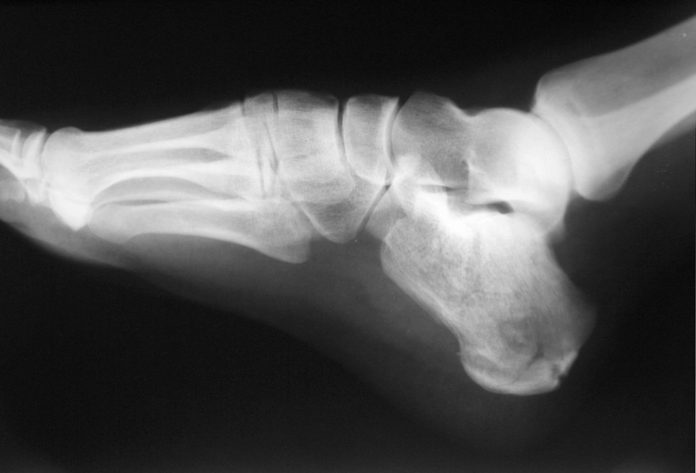
New targeted therapy for bone fracture increased bone density, lower toxicity, and reduced healing time by 60%
What if the entire month of inactivity following a simple bone fracture could become just 18 days. it is possible.
New research presented at the 2018 American Association of Pharmaceutical Scientists (AAPS) PharmSci 360 Meeting demonstrated a novel bone anabolic agent that, when injected, intravenously reduces femur fracture healing time by 60 percent. This, it does without impacting the surrounding healthy tissue.
The only drug currently available to accelerate the healing process must be applied directly onto the fracture surface during surgery, but not all breaks require such intervention. Even though many broken bones don’t need surgery, most require a prolonged healing process that can lead to morbidity, loss of work productivity, and in some cases even death.
Researchers designed a new chemical entity (a dasatinib-aspartate10 conjugate, DAC) that employs a targeted peptide attached to dasatinib, an anti-cancer drug that has been shown to promote the growth of new bones
Researchers designed a new chemical entity (a dasatinib-aspartate10 conjugate, DAC) that employs a targeted peptide attached to dasatinib, an anti-cancer drug that has been shown to promote the growth of new bones. Following systemic injection, DAC is observed to concentrate on the fracture surface, resulting in accelerated repair and increased bone density. The data shows that the healing process that typically takes eight weeks for full recovery of mechanical strength is reduced to three to four weeks when treated with the targeted drug.
The study results showed that treatment with DAC every other day for three weeks was equally effective as daily injections of DAC, yielding a 114 percent increase in bone density. Since the blood supply to the fracture area is often disrupted immediately after a fracture, waiting a week or two for blood vessels to stabilize prior to administering DAC did not negatively impact its effectiveness or the healing speed.
While administration of nontargeted dasatinib provided some improvement in healing rate, DAC was dramatically better, doubling the bone density. The targeted form of dasatinib is administered to the bone fracture surface and its presence in all other tissues should be greatly reduced.
Philip Low principal investigator and Presidential Scholar for Drug Discovery, Purdue Institute for Drug Discovery noted, “While the use of casts, rods, or pins may still be required in some cases, the ability of this therapy to accelerate the return of a fracture patient to normal function and lifestyle could have widespread benefits to the entire orthopedic community.”
The researchers, plan to test the efficacy of DAC in additional fractures next, including long bone fractures, hip fractures, nonunion fractures, spinal fusions, and craniofacial fractures.









